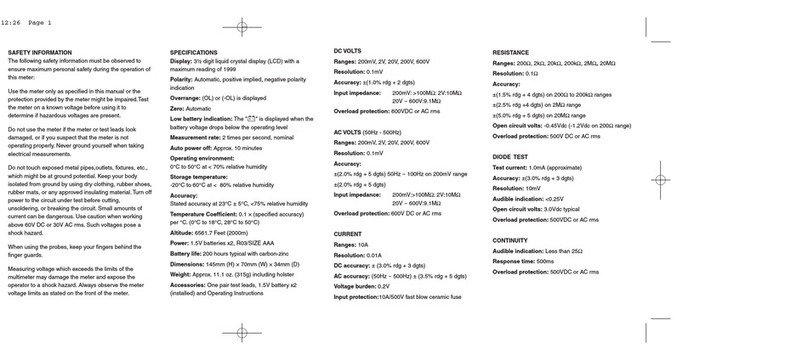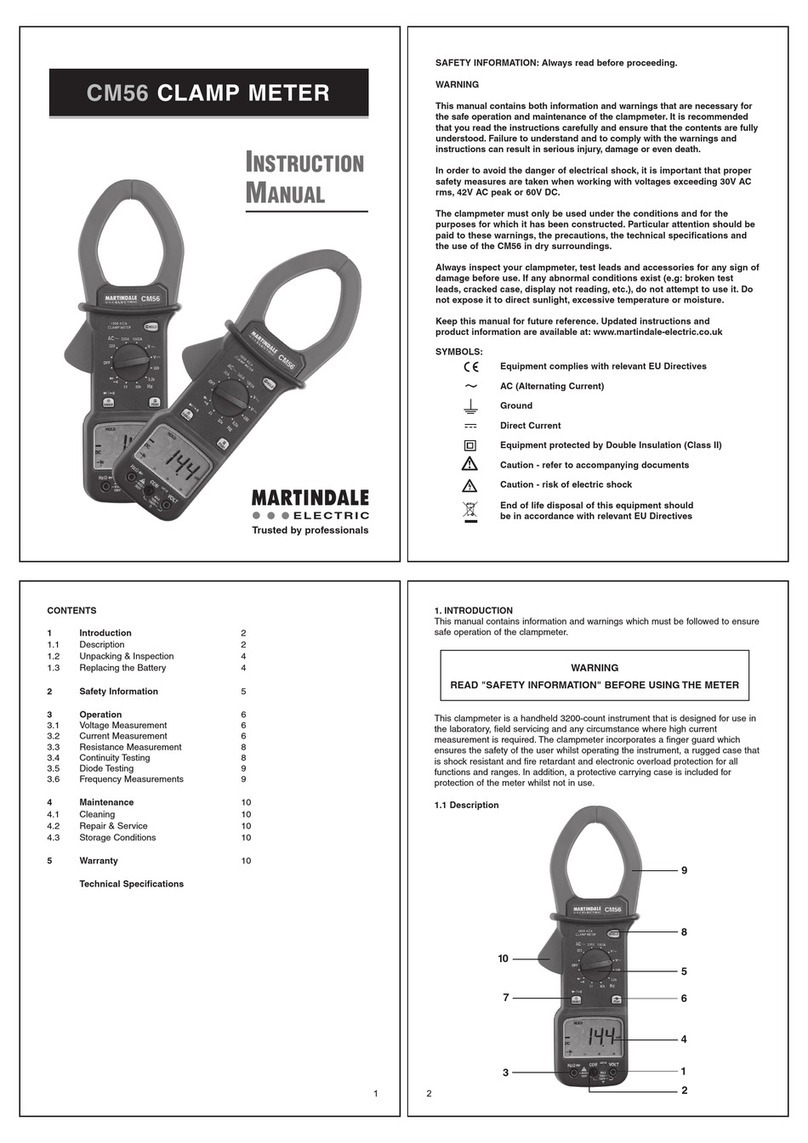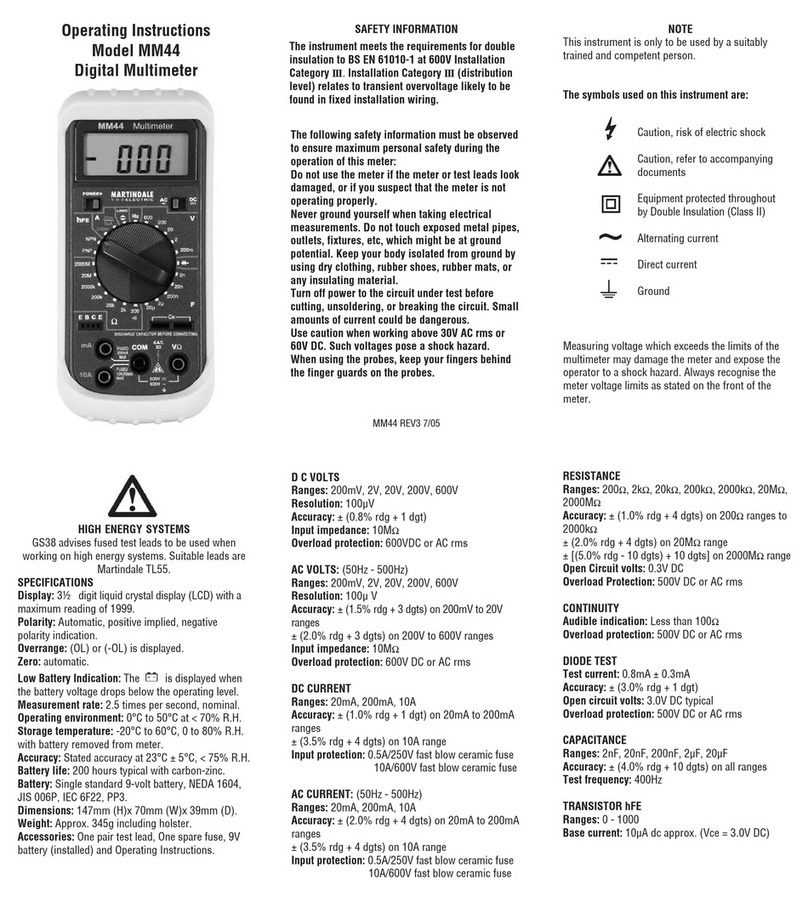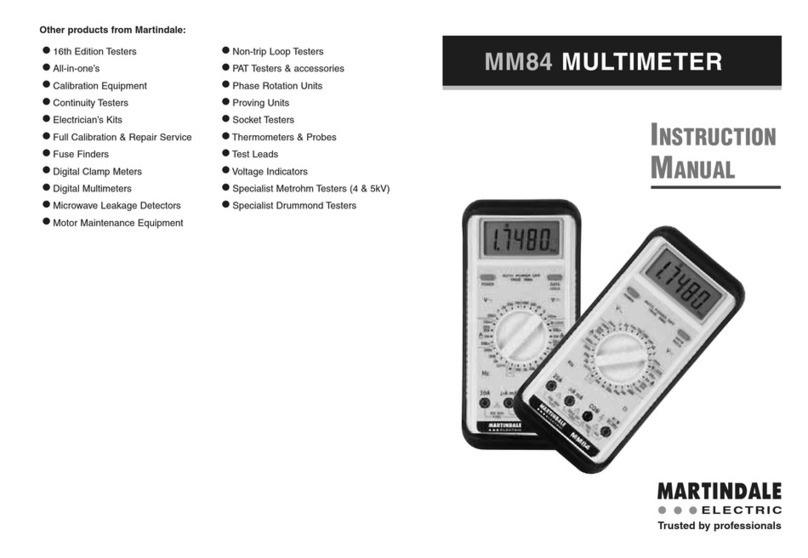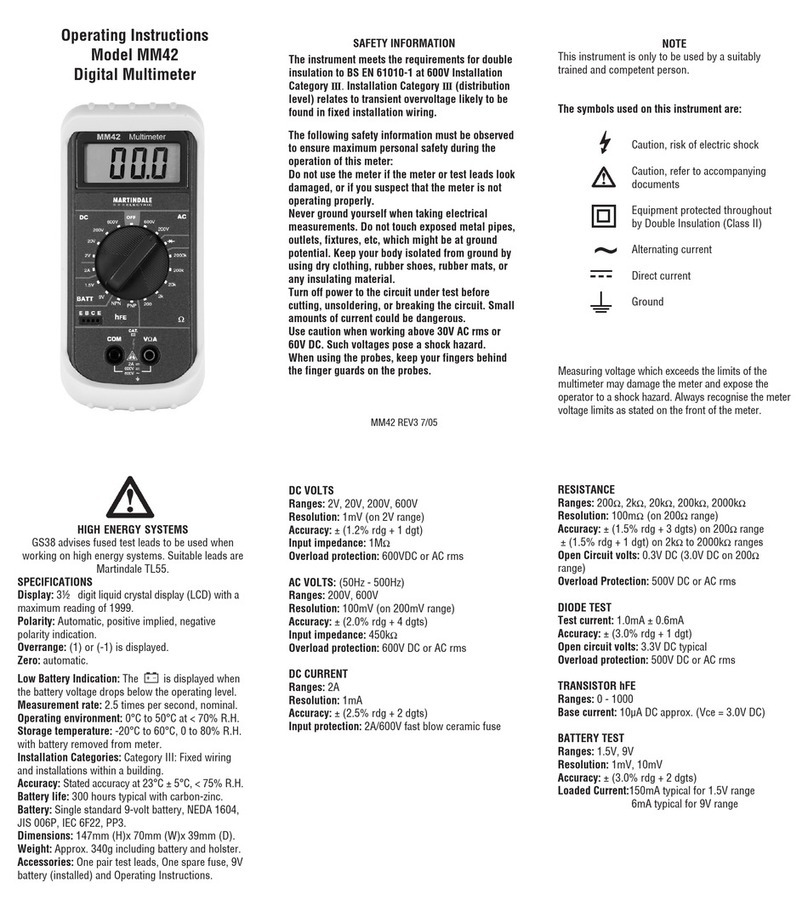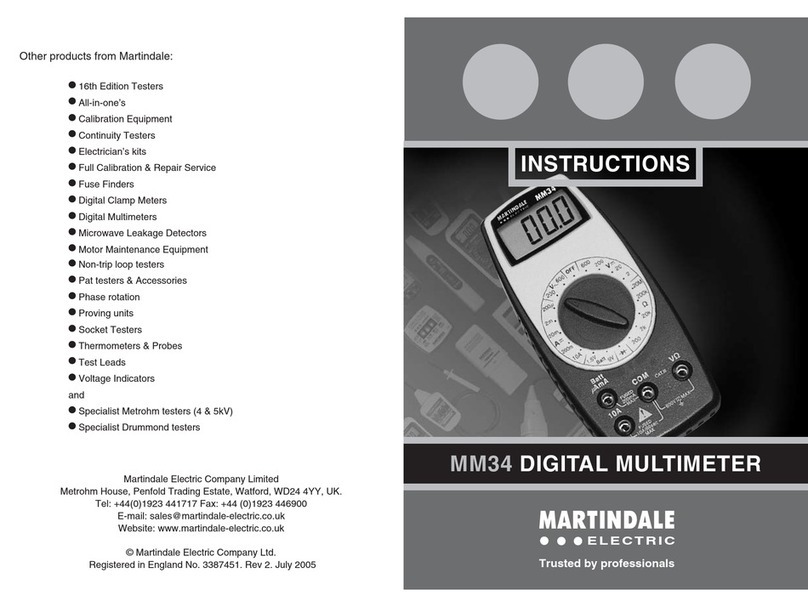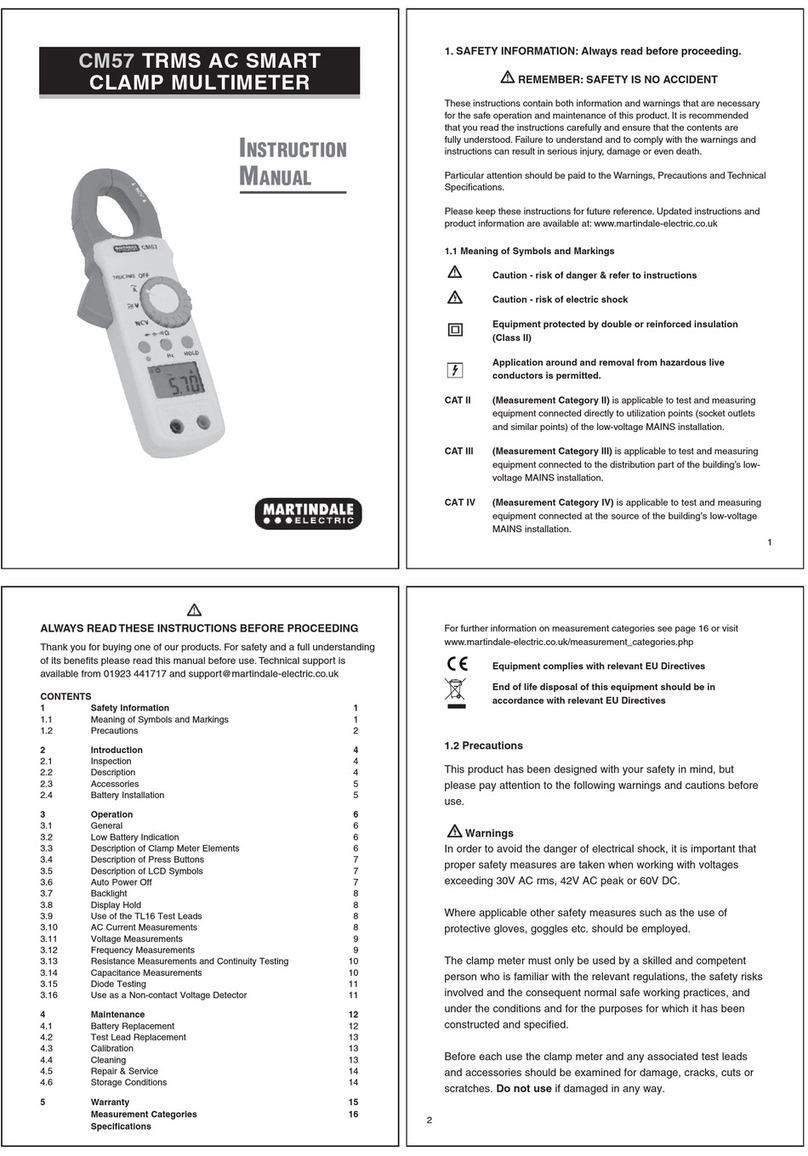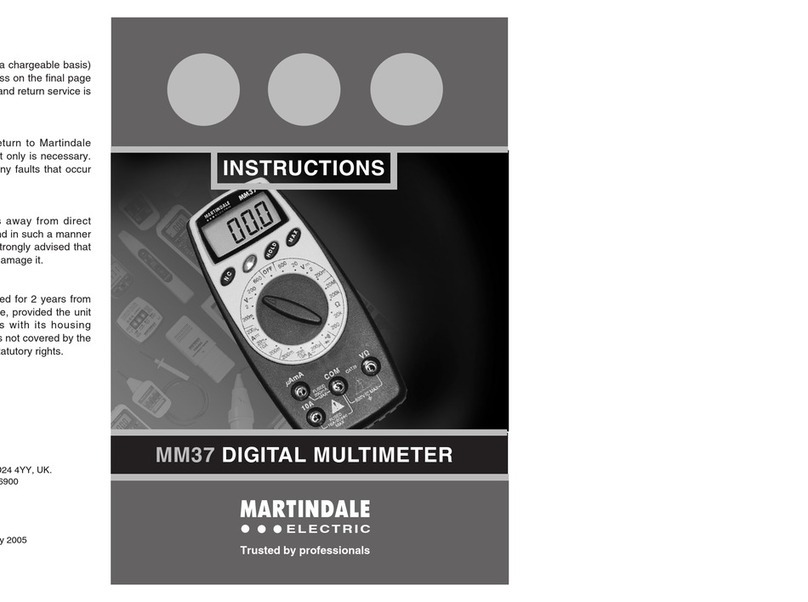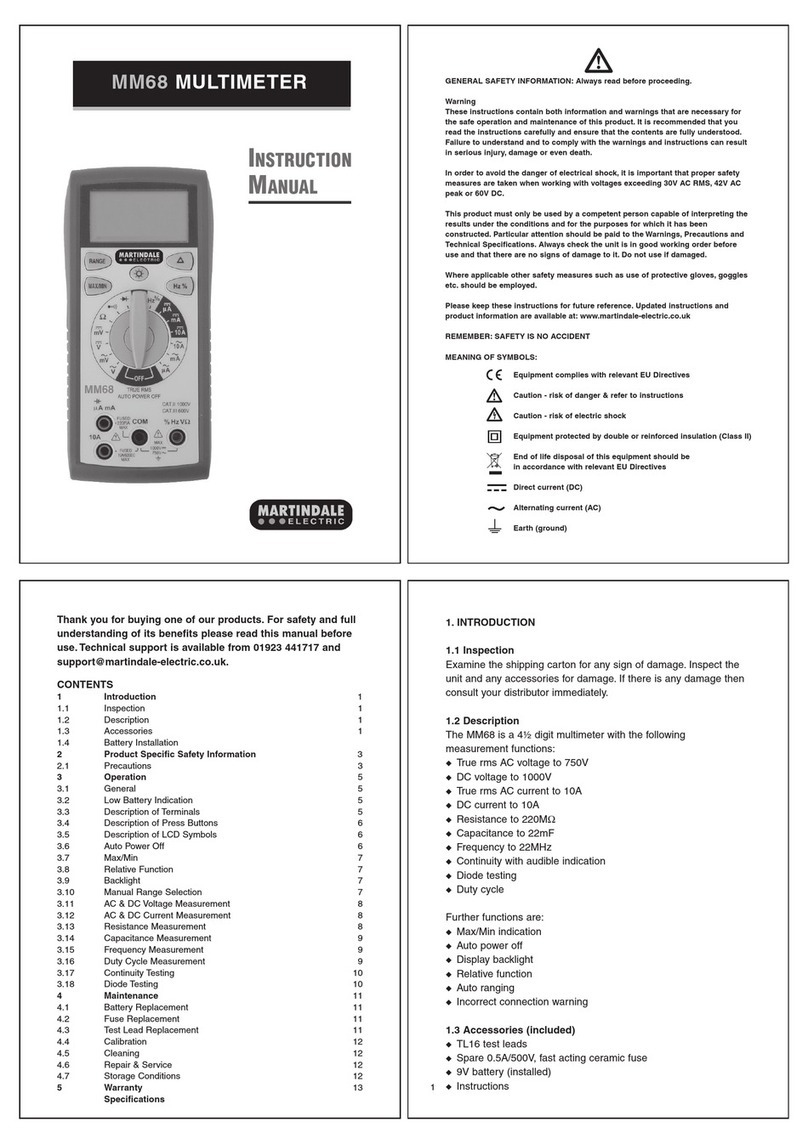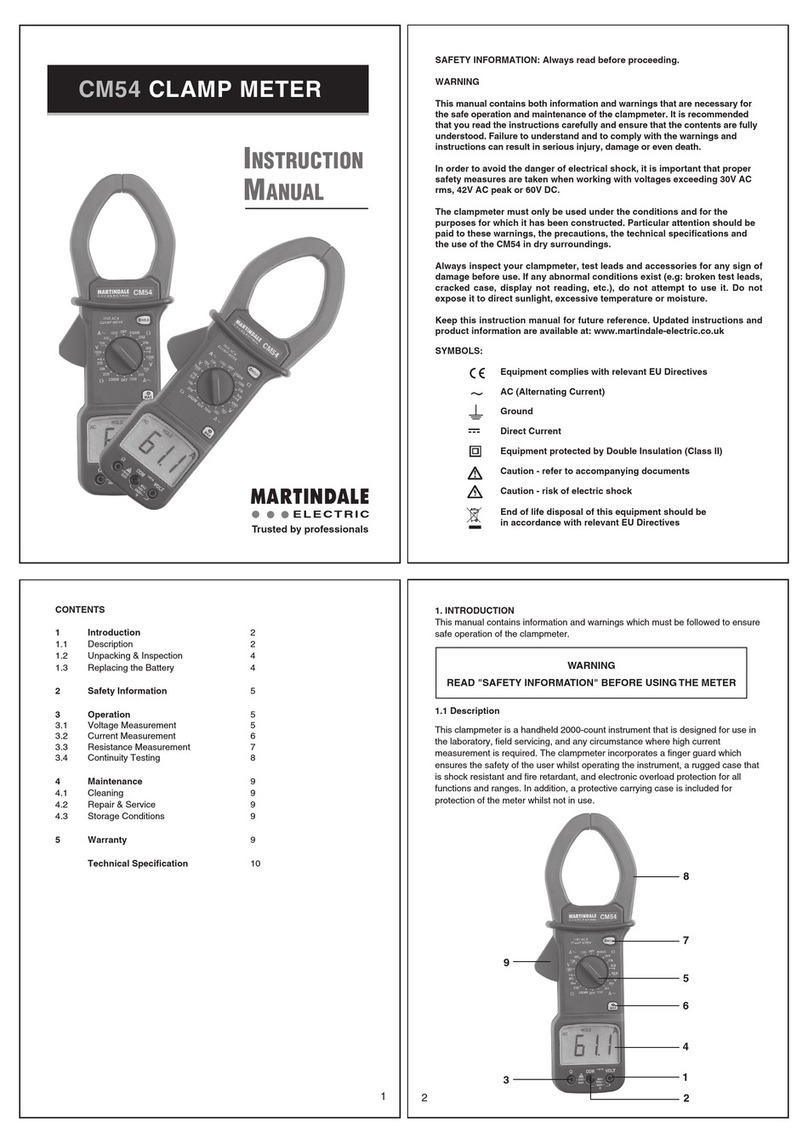at more than 16A. Health & Safety
Guidance Note GS38 advises against
using this instrument on high energy
circuits due to the lack of fused leads.
To ensure correct functioning and long
life span, avoid leaving the instrument in
direct sunlight.
Operating Elements & Connections
1. Measurement Range Switch
2. Resistance-Zero-Adjustment
3. Analogue Display
4. Protective Rubber Holster
5. Test Leads with Probes
6. Battery casing on rear of instrument
Preparation & Safety Measures
WARNING Set range selection switch to
desired function prior to connecting test
probes to the UUT (Unit / circuit Under
Test).
Prior to switching to a new function or
measurement range, always disconnect
the measurement leads from the UUT.
Only use the multimeter in dry and clean
environments. Dirt and humidity lower
insulation resistances and can lead to
electric shocks in the case of higher
voltages.
Only use the multimeter within specified
measurement ranges.
Prior to and after instrument use, always
verify the instrument for correct
functioning (e.g. with a known voltage
source or a proving unit).
Ensure that measurement leads are in
perfect condition.
Only use fuses of the same type and
characteristics as originally supplied.
Short circuiting the fuse holders is
extremely dangerous.
Voltage Measurement
WARNING Never apply more than 500V
AC/DC at input sockets. Exceeding
these threshold values could lead to the
instrument being damaged or personnel
injuries.
WARNING Disconnect test probes from
the UUT prior to selecting a different
measurement range.
DC Voltage Measurement
1. Set measurement range switch (1) to
DC voltage measurement (DCV).
Always select the highest measurement
range for unknown voltages.
2. Connect test probes to UUT, select
lower measurement range as required,
until maximum resolution is achieved.
3. Read the voltage on the black scale.
AC Voltage Measurement
1. Set measurement range switch (1) to
AC voltage measurement (ACV). Always
select highest measurement range for
unknown voltages.
2. Connect test probes to UUT, select
lower measurement range as required,
until maximum resolution is achieved.
3. Read the voltage on the AC scale (for
10V range, read on the red 10V AC
scale).
Resistance Measurement
WARNING Prior to any measurement
ensure that the UUT is not live. If
required, carry out voltage measurement
for verification.
1. Set range selection switch (1) to Ω
range. Short two probes together and
adjust the 0 OHM ADJ (2) knob to set
the pointer to the “0” at the right end of
the resistance scale. If you cannot
achieve this, replace the battery with a
new one.
2. Connect test leads to UUT.
3. Read the resistance reading on the
OHM scale (green); use proper multiplier
to get the correct value (Rx10, Rx1k,
depending on the resistance range).
DC Current Measurement
WARNING Never measure in circuits
with more than 240V nominal voltage.
Do not attempt to read AC current. Do
not use on circuits where the current
may exceed 250mA DC.
1. Set range selection switch (1) to
DCmA.
2. In the case of unknown currents,
always select the 250mA current range
and switch to the lower measurement
range as required. Disconnect test leads
from UUT prior to changing
measurement ranges.
3. Connect multimeter in series with the
UUT and only switch on the UUT once
the multimeter is connected to the UUT.
4. Read the current reading on the
current scale.
Decibel Measurement
WARNING Never apply more than 500V
AC/DC at input sockets. Exceeding
these threshold values could lead to the
instrument being damaged or personnel
injuries.
WARNING Disconnect test probes from
the UUT prior to selecting a different
measurement range.
1. Set the selector switch to one of the
ACV ranges.
2. For 10V AC range, read dB reading
on the dB scale directly, but for other
ranges, calculate the reading using the
table below:
NOTE: For absolute dB measurement,
the circuit impedance must be 600Ω.
0dB = 1mW dissipated in a 600Ωload.
3. For a signal with a DC component,
insert a capacitor > 0.1µF between the
test probe and circuit under test.
Battery Check
1. Set selector switch to one of the
BATT positions.
2. Connect probes to the battery with the
red probe to the +ve terminal and the
black to the -ve terminal.
3. Read the GOOD/BAD (green and red)
scale.
Maintenance
When using the instrument in
compliance with the instruction manual
no special maintenance is required. Any
adjustments and repairs may only be
carried out by competent persons.
Calibration
To ensure accuracy and reliability of
measurement results, we recommend
you calibrate the instrument periodically.
Battery Replacement
Short the two probes together and adjust
the 0 OHM ADJ (2) knob to set the
pointer to the “0” at the right end of the
dB Range
ACV Range
Add Value
24 to 564 to 36-10 to 22
10V
0
50V
14
500V
34
